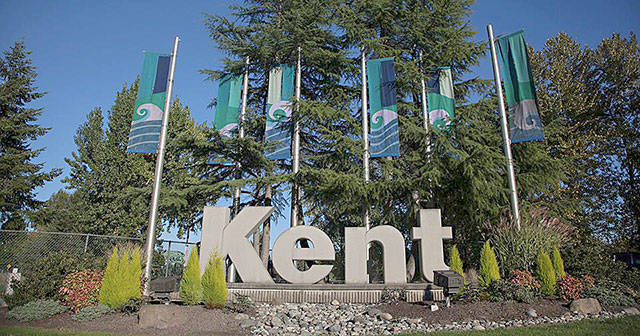A popular, revised city of Kent neighborhood residential traffic calming program is on hold because of the COVID-19 outbreak.
Residents are showing plenty of interest since the city changed the program requirements in June. But city staff report that they cannot do any accurate studies because of the abnormal traffic conditions created by the pandemic.
“It’s been getting a very favorable response from residents so far,” said Erik Preston, city traffic engineer, in a report July 14 to the Kent City Council’s Committee of the Whole. “They appreciate the update (to the program) and that it’s a comprehensive and clear process. They hope it will help their neighborhood be a better place to live.”
The council approved changes June 2 that simplified the application process and considers other factors besides speed to help city staff and residents determine if signage, speed humps, traffic circles or other devices are needed to slow traffic through a neighborhood. The previous program basically studied how many vehicles were going 10 mph or more over the speed limit to determine whether slowing devices were needed.
The revised model uses a point system and looks at speed as well as cut-through traffic, volume of traffic, collisions, if there are sidewalks, if a school is nearby and other factors.
If a neighborhood applies and qualifies based on the point system, city staff will schedule a meeting with residents, look at options and finalize a plan. Residents in the study area then will vote by mail. If there is a 50 percent return and two-thirds vote in favor, city staff will schedule the project.
Mayor Dana Ralph told Preston during a traffic calming program update in May that she’s glad residents have a new application process.
“I have been hearing about this not only as a council member but since I became mayor,” Ralph said. “Neighborhoods voiced their frustration with the process and the uncertainty in how things move forward and not necessarily other criteria that made each neighborhood’s individual needs different.”
Twenty-five neighborhoods applied for the program in the first six months of the year, a record number and more than the number of applicants in all of 2019, Preston said. Two more applied in July. There are a total of 29 pending studies.
“The program is in some ways on hold,” Preston said. “Traffic volumes are below last year (because of the COVID-19 stay home shutdown in March), so we have not done a study. The start of school probably would give us most normal conditions to resume counting of data.”
But the Kent School District just announced this week that it will start the school year with remote learning, meaning no traffic will be heading to schools across the city.
Twenty requests need evaluation and 10 others need re-evaluation, Preston said. Two projects will be done this summer.
Crews will install three speed cushions along Hazel Avenue North from East James to East Smith streets. Crews also will install four speed cushions and one raised crosswalk along 98th Avenue South from South 240th to South 248th streets.
Speed cushions reduce vehicle speeds but avoid excessive damage to emergency vehicles, according to the Kent Public Works Department. They are designed to allow the wider axles of fire engines and ambulances to straddle the cushions without slowing down while forcing smaller vehicles to ride up over the cushions with at least one set of wheels.
Other slowing devices used by the city include traffic circles, which are raised islands, placed at intersections, around which traffic circulates. They are good for calming intersections, especially within neighborhoods that have major concerns about speeds, traffic volumes and safety. Crews also install speed humps, generally considered the most traditional of traffic calming devices. Speed humps are raised devices, parabolic in shape, that are placed across a residential road in a series, to slow cars down.
Talk to us
Please share your story tips by emailing editor@kentreporter.com.
To share your opinion for publication, submit a letter through our website https://www.kentreporter.com/submit-letter/. Include your name, address and daytime phone number. (We’ll only publish your name and hometown.) Please keep letters to 300 words or less.

